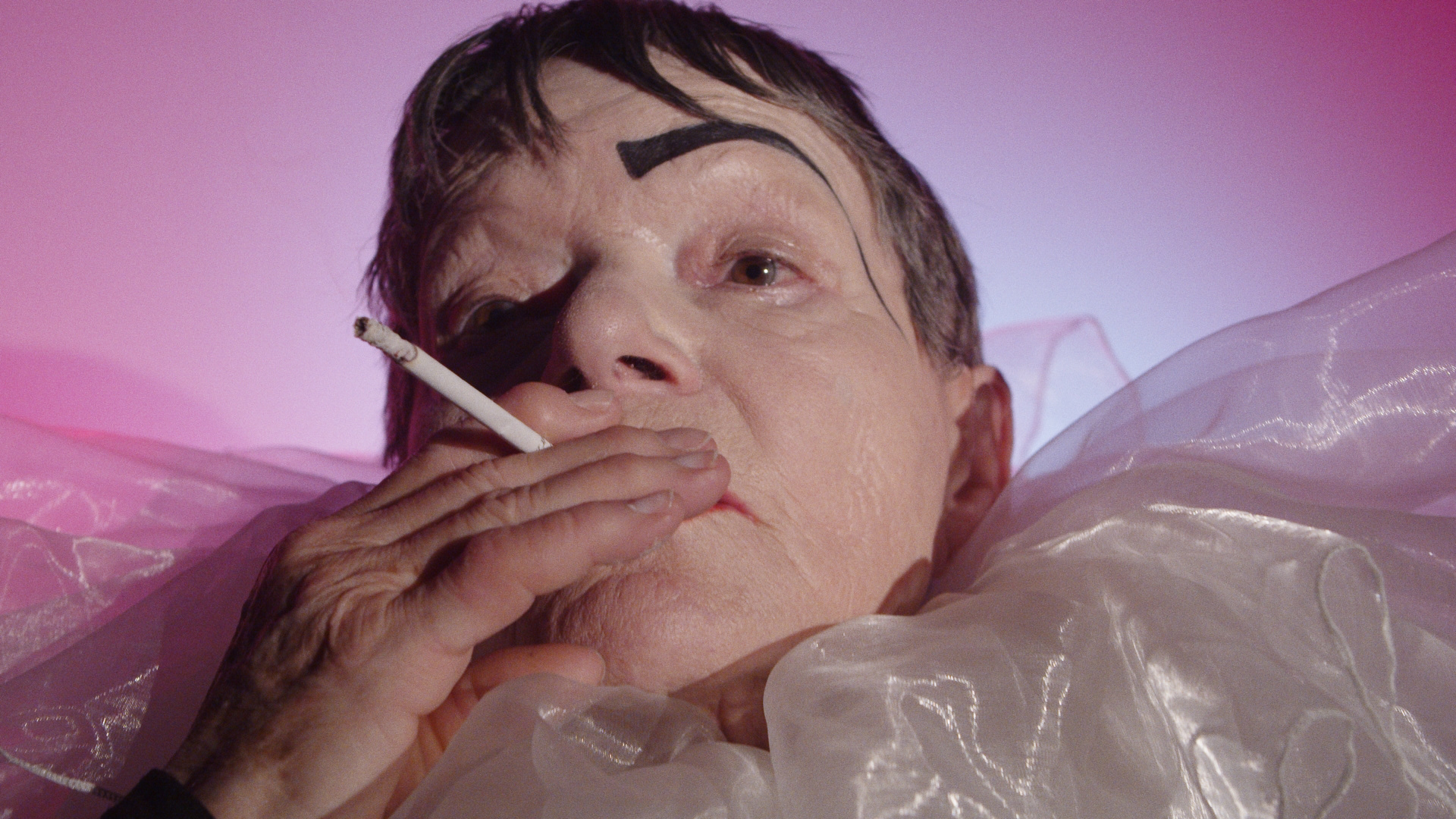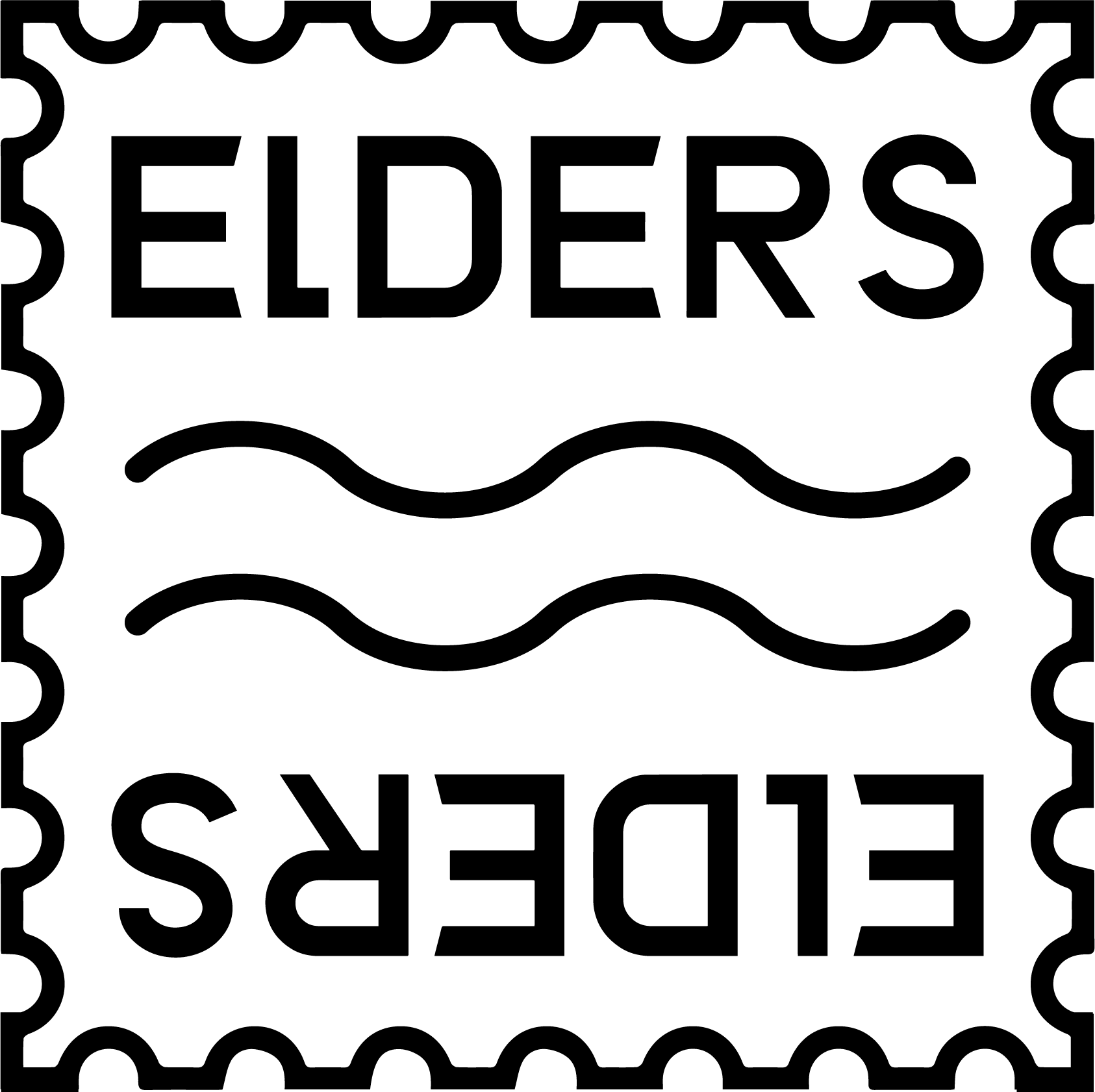![]()
CORRIDOR ︎︎︎ 26.11.2022 - 08.01.2023
Julie Béna, STRAKATI (2022)
Installation and film
Powder coated metal, pictures, tv screen, lights, film, 25 minutes.
Commissioned by Centre Pompidou and National Gallery Prague
Courtesy the artist and Polansky Gallery, Prague
1982, FR
Lives and works in Paris (FR)
NL
Béna's nieuwe film stelt de stereotiepe positie van de kunstenaar ter discussie als iemand die zijn praktijk boven zijn gezin stelt, een situatie die des te gecompliceerder is als de persoon in de rol van kunstenaar een vrouw is. De film kan worden gezien als een complex en authentiek in het reine komen met maatschappelijke oordelen en zelfverwijten over het conflict tussen werk en gezin. Het weloverwogen gekozen genre van horror en nachtmerrie geeft de kunstenaar de ruimte om te spelen met de rollen van moeder, vrouw en dochter en deze symbolisch te overdrijven. Met hyperbool worden hun relaties omgekeerd wanneer zij haar familie gebruikt en misbruikt voor haar kunst.
De hoofdrolspeler is een boosaardige, wispelturige nar en grappenmaker. Het personage is zowel verleidelijk als dictatoriaal en gebruikt en exploiteert de gedragsmechanismen en houdingen geassocieerd met donkere humor.
De film neigt naar een tragische clownshow en maakt gebruik van fysieke gebaren in plaats van woorden om de antithetische emoties van de kunstenaar bloot te leggen. De film is sterk overgeacteerd en schommelt tussen humor en tragedie. Ergens tussen mimespelers en clowns in dragen de figuren opvallende make-up op hun gezichten en de spanning in hun lichamen geeft de indruk van tragische pantomime. De hoofdrollen in de film worden gespeeld door de kunstenares en haar echte familie. Het betrekken van haar familie en hen misbruiken als performers in een film leidt de kunstenares naar catharsis, reiniging en versterking. De film speelt zich af in een sculpturaal object dat op een circuscaravan lijkt en herinneringen oproept aan de jeugd van de kunstenaar in een reizend theater.
Julie Béna is geboren in 1982 in Parijs, Frankrijk, en woont en werkt momenteel tussen Praag en Parijs. Ze is afgestudeerd aan de Villa Arson in Nice en volgde de Gerrit Rietveld Academie in Amsterdam. In 2012-13 maakte ze deel uit van le Pavillon, het onderzoekslaboratorium van het Palais de Tokyo, Parijs. In 2018 werd ze genomineerd voor de Prix AWARE vrouwen kunstprijs. Haar werk bestaat uit een eclectisch geheel van referenties, waarbij ze hedendaagse en oude literatuur, hoge en lage kunst, humor en ernst, parallelle tijden en ruimtes combineert. Haar werk, bestaande uit sculptuur, installatie, film en performance, lijkt vaak te zweven in een oneindig vacuüm, zich ontvouwend tegen een fictieve achtergrond waar alles mogelijk is. De afgelopen jaren heeft Béna een reeks persoonlijke kosmologieën ontwikkeld waarin zij schijnbaar banale personages en objecten opvoert die raadselachtige gesprekken en interacties met elkaar hebben. Van Pantopon Rose - een personage ontleend aan William S. Burroughs' 'Naked Lunch' - tot Miss None en Mister Peanut - een onstoffelijk zwevende pruik en de iconische antropomorfe pinda met één hoofd -, geeft Béna haar personages een unieke agency en stem, die hen definieert door wat ze niet zijn.
Béna's geselecteerde solotentoonstellingen omvatten Sombre dimanche, Longtermhanstand, Boedapest, HU (2022); The Den, NıCOLETTı, Londen, UK (2021); Miles, Villa Arson, Nice, FR (2021); Artissima, kunstbeurs met NıCOLETTı, Turijn, IT (2021); The wolf, the princess and the little soldier, Polansky Gallery, Praag, CZ (2020); The Jester and Death, Kunstraum, Londen, UK (2020); Les Lèvres Rouges, Kunstverein Bielefeld, DE (2020); Anna and the Jester in Window of Opportunity, Jeu de Paume, Parijs, FR (2019); Anna and the Jester, CAPC Bordeaux, FR (2019); Anna and the Jester, Museo Amparo, Pueblo, Mexico, MX (2019); en Have you seen Pantopon Rose? , Passerelle, Brest, FR (2017).
EN Béna’s new film casts doubt on the stereotypical position of the artist as someone who puts their practice before their family, a situation made all the more complicated if the person in the role of artist is a woman. The film may be viewed as a complex and authentic coming to terms with social judgement, as well as self-reproaches regarding the work-family conflict. Chosen with deliberation, the genre of horror and nightmare gives the artist room to play with, and symbolically exaggerate, the roles of mother, wife and daughter. Employing hyperbole, their relationships are inverted when she uses and abuses her family for her art.
The main protagonist is a maliciously capricious jester come prankster. Both seductive and dictatorial, the character uses and exploits the behavioural mechanisms and attitudes associated with dark humour.
Verging towards a tragic clown show, the film employs physical gestures instead of words to lay bare the artist’s antithetic emotions. Emphatically overacted, it oscillates between laughter and tragedy. Somewhere between mimes and clowns, the figures wear striking make-up on their faces and the tension in their bodies gives the impression of tragic pantomime. The film’s main roles are played by the artist and her real family. Involving her family and abusing them as performers in a film leads the artist towards catharsis, cleansing and reinforcement. The film is set in a sculptural object resembling a circus caravan, evoking memories of the artist’s childhood in a travelling theatre.
Julie Béna was born in 1982 in Paris, France, and currently lives and works between Prague and Paris. She is a graduate of the Villa Arson, Nice, and attended the Gerrit Rietveld Academie in Amsterdam. In 2012–13, she was part of le Pavillon, the research laboratory of the Palais de Tokyo, Paris. In 2018, she was nominated for the Prix AWARE women art prize. Her work is made up of an eclectic set of references, combining contemporary and ancient literature, high and low art, humor and seriousness, parallel times and spaces. Comprising sculpture, installation, film, and performance, her work seems to often float in an infinite vacuum, unfolding against a fictional backdrop where everything is possible. Over the past years, Béna has developed a range of personal cosmologies in which she stages seemingly banal characters and objects that have enigmatic conversations and interactions with each other. From Pantopon Rose – a character taken from William S. Burroughs’ ‘Naked Lunch’ –, to Miss None and Mister Peanut – a disembodied floating wig and the iconic monocled anthropomorphic peanut –, Béna lends her characters a singular agency and voice, which defines them by what they are not.
Béna’s selected solo exhibitions include Sombre dimanche, Longtermhanstand, Budapest, HU (2022); The Den, NıCOLETTı, London, UK (2021); Miles, Villa Arson, Nice, FR (2021); Artissima, art fair with NıCOLETTı, Torino, IT (2021); The wolf, the princess and the little soldier, Polansky Gallery, Prague, CZ (2020); The Jester and Death, Kunstraum, London, UK (2020); Les Lèvres Rouges, Kunstverein Bielefeld, DE (2020); Anna and the Jester in Window of Opportunity, Jeu de Paume, Paris, FR (2019); Anna and the Jester, CAPC Bordeaux, FR (2019); Anna and the Jester, Museo Amparo, Pueblo, Mexico, MX (2019); and Have you seen Pantopon Rose?, Passerelle, Brest, FR (2017).


